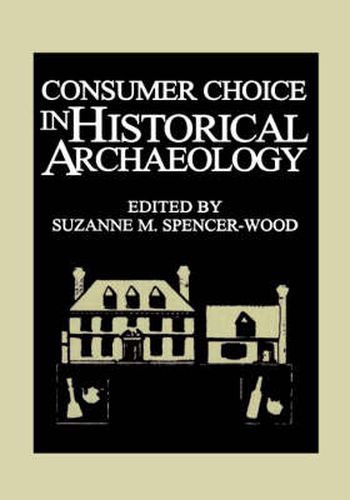Readings Newsletter
Become a Readings Member to make your shopping experience even easier.
Sign in or sign up for free!
You’re not far away from qualifying for FREE standard shipping within Australia
You’ve qualified for FREE standard shipping within Australia
The cart is loading…






This title is printed to order. This book may have been self-published. If so, we cannot guarantee the quality of the content. In the main most books will have gone through the editing process however some may not. We therefore suggest that you be aware of this before ordering this book. If in doubt check either the author or publisher’s details as we are unable to accept any returns unless they are faulty. Please contact us if you have any questions.
Historical archaeology has made great strides during the last two decades. Early archaeological reports were dominated by descriptions of features and artifacts, while research on artifacts was concentrated on studies of topology, technology, and chronology. Site reports from the 1960s and 1970s commonly expressed faith in the potential artifacts had for aiding in the identifying socioeconomic status differences and for understanding the relationships be tween the social classes in terms of their material culture. An emphasis was placed on the presence or absence of porcelain or teaware as an indication of social status. These were typical features in site reports written just a few years ago. During this same period, advances were being made in the study of food bone as archaeologists moved away from bone counts to minimal animal counts and then on to the costs of various cuts of meat. Within the last five years our ability to address questions of the rela tionship between material culture and socioeconomic status has greatly ex panded. The essays in this volume present efforts toward measuring expendi ture and consumption patterns represented by commonly recovered artifacts and food bone. These patterns of consumption are examined in conjunction with evidence from documentary sources that provide information on occupa tions, wealth levels, and ethnic affiliations of those that did the consuming. One of the refreshing aspects of these papers is that the authors are not afraid of documents, and their use of them is not limited to a role of confirmation.
$9.00 standard shipping within Australia
FREE standard shipping within Australia for orders over $100.00
Express & International shipping calculated at checkout
This title is printed to order. This book may have been self-published. If so, we cannot guarantee the quality of the content. In the main most books will have gone through the editing process however some may not. We therefore suggest that you be aware of this before ordering this book. If in doubt check either the author or publisher’s details as we are unable to accept any returns unless they are faulty. Please contact us if you have any questions.
Historical archaeology has made great strides during the last two decades. Early archaeological reports were dominated by descriptions of features and artifacts, while research on artifacts was concentrated on studies of topology, technology, and chronology. Site reports from the 1960s and 1970s commonly expressed faith in the potential artifacts had for aiding in the identifying socioeconomic status differences and for understanding the relationships be tween the social classes in terms of their material culture. An emphasis was placed on the presence or absence of porcelain or teaware as an indication of social status. These were typical features in site reports written just a few years ago. During this same period, advances were being made in the study of food bone as archaeologists moved away from bone counts to minimal animal counts and then on to the costs of various cuts of meat. Within the last five years our ability to address questions of the rela tionship between material culture and socioeconomic status has greatly ex panded. The essays in this volume present efforts toward measuring expendi ture and consumption patterns represented by commonly recovered artifacts and food bone. These patterns of consumption are examined in conjunction with evidence from documentary sources that provide information on occupa tions, wealth levels, and ethnic affiliations of those that did the consuming. One of the refreshing aspects of these papers is that the authors are not afraid of documents, and their use of them is not limited to a role of confirmation.